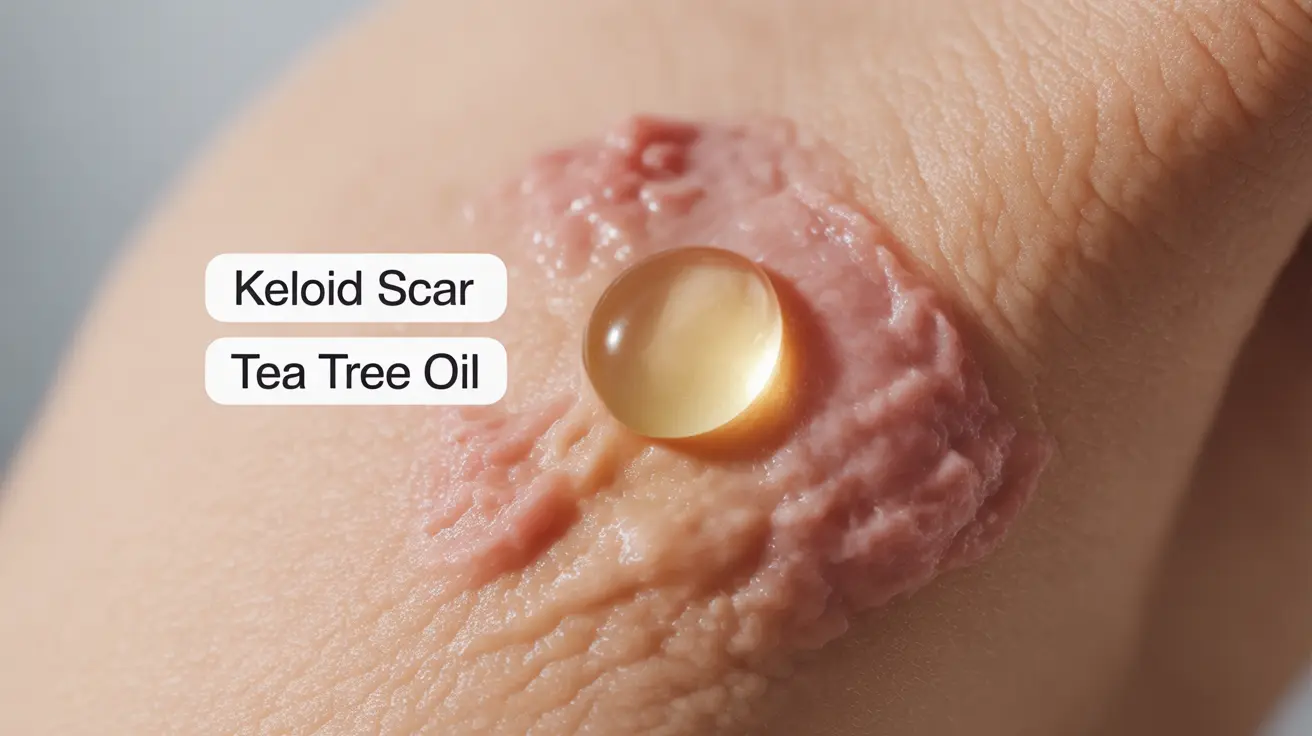Living with keloid scars can be challenging, and many people turn to natural remedies like tea tree oil for potential relief. This essential oil, known for its antimicrobial and anti-inflammatory properties, has gained attention as a possible treatment for keloid scars. But how effective is it, and how long does it take to see results?
In this comprehensive guide, we'll explore the relationship between tea tree oil and keloid scars, examining its potential benefits, safety considerations, and what realistic expectations you should have when using this natural remedy.
Understanding Keloid Scars and Tea Tree Oil
Keloid scars are raised, thick areas of scar tissue that develop when the skin produces excess collagen during the healing process. These scars extend beyond the original injury site and can be challenging to treat effectively.
Tea tree oil contains several compounds, including terpinen-4-ol, which may help reduce inflammation and promote skin healing. However, it's important to understand that while tea tree oil might help with certain aspects of keloid management, it's not a proven cure for existing keloids.
Timeline for Tea Tree Oil Treatment
When using tea tree oil for keloid scars, results can vary significantly between individuals. Most people who report positive effects typically notice changes in the following timeline:
- Reduction in redness and inflammation: 2-4 weeks
- Improvement in skin texture: 4-8 weeks
- Potential scar softening: 8-12 weeks
However, it's crucial to note that these timeframes are based on anecdotal evidence, as there are currently no large-scale clinical studies specifically examining tea tree oil's effects on keloid scars.
Safe Application Methods
To use tea tree oil safely on keloid scars, follow these guidelines:
- Always dilute tea tree oil with a carrier oil (such as coconut or jojoba oil)
- Use a 2-3% dilution (about 12 drops of tea tree oil per ounce of carrier oil)
- Perform a patch test before full application
- Apply the diluted mixture once or twice daily
- Stop use if irritation occurs
Medical Treatment Options for Keloids
While tea tree oil might help with symptom management, several proven medical treatments are available for keloid scars:
- Corticosteroid injections
- Pressure therapy
- Silicone sheets or gel
- Cryotherapy
- Laser therapy
- Surgical removal (with additional treatments to prevent recurrence)
Frequently Asked Questions
How long does it take for tea tree oil to heal or reduce keloid scars?
Tea tree oil may take 8-12 weeks of consistent use to show any noticeable effects on keloid scars. However, results vary significantly among individuals, and there's no guarantee of improvement.
Can tea tree oil prevent keloids from forming after a wound or injury?
While tea tree oil has anti-inflammatory properties that might help with wound healing, there's no scientific evidence that it can prevent keloid formation. The best prevention methods include proper wound care and protection from sun exposure.
Is tea tree oil safe to use on keloid scars or sensitive skin?
Tea tree oil can be safe when properly diluted, but it may cause irritation in people with sensitive skin. Always perform a patch test first and never apply undiluted tea tree oil directly to the skin.
What are the medically recommended treatments for reducing or removing keloid scars?
Medical professionals typically recommend a combination of treatments, including corticosteroid injections, silicone sheets, pressure therapy, and sometimes surgical removal followed by preventive treatments. These methods have shown more consistent results than natural remedies.
Does tea tree oil help reduce redness, itching, or swelling associated with keloids?
Tea tree oil's anti-inflammatory properties may help reduce redness, itching, and swelling associated with keloids in some cases. However, effects vary by individual, and medical treatments might be more effective for managing these symptoms.




